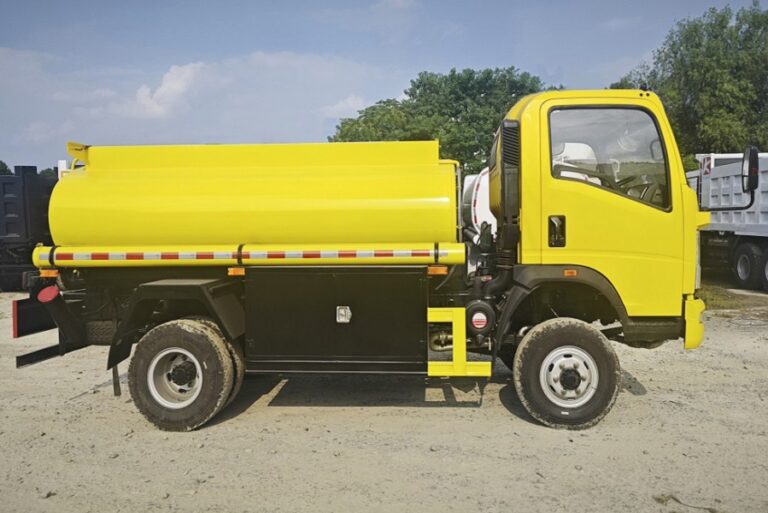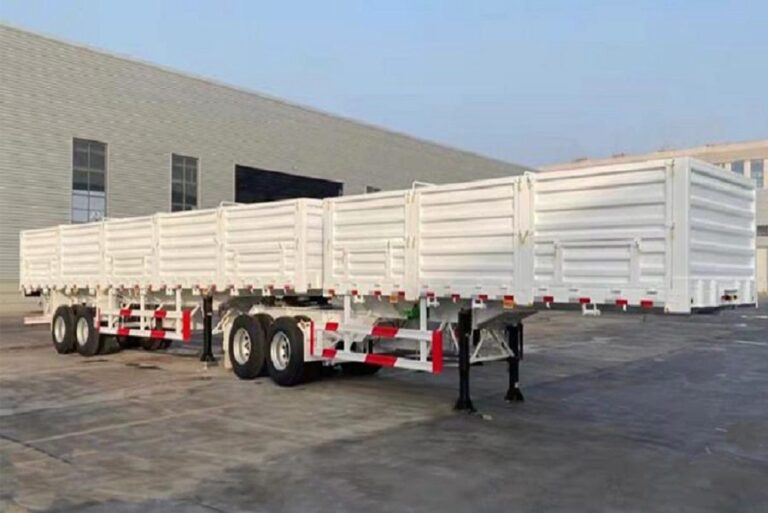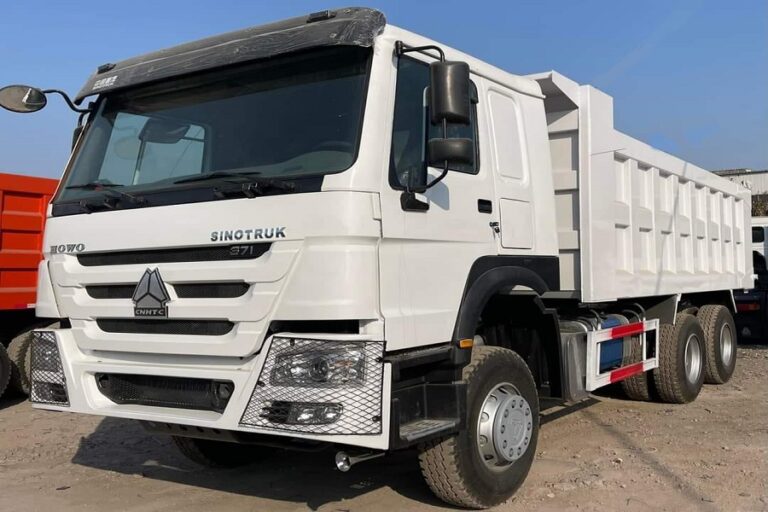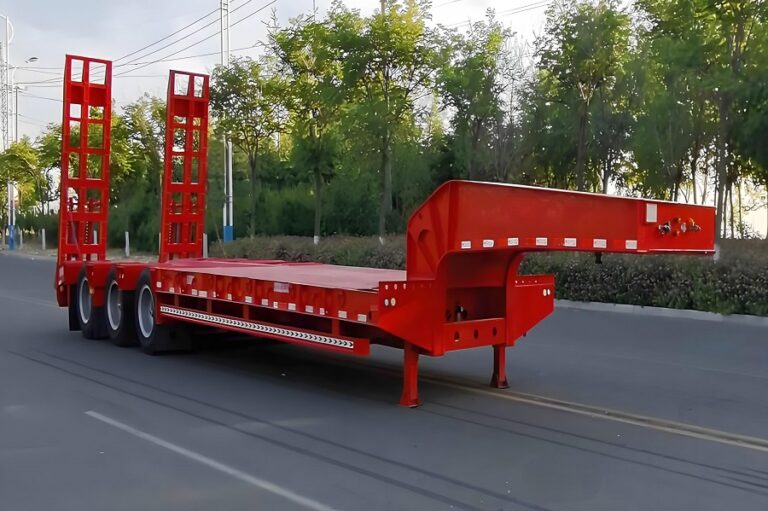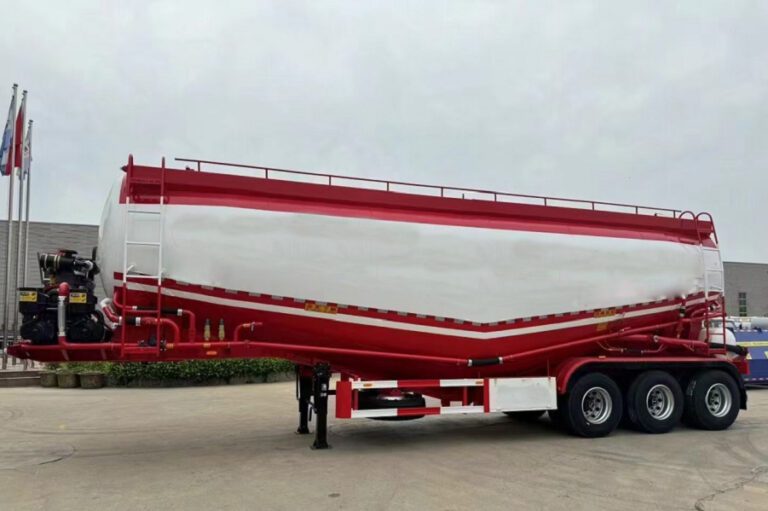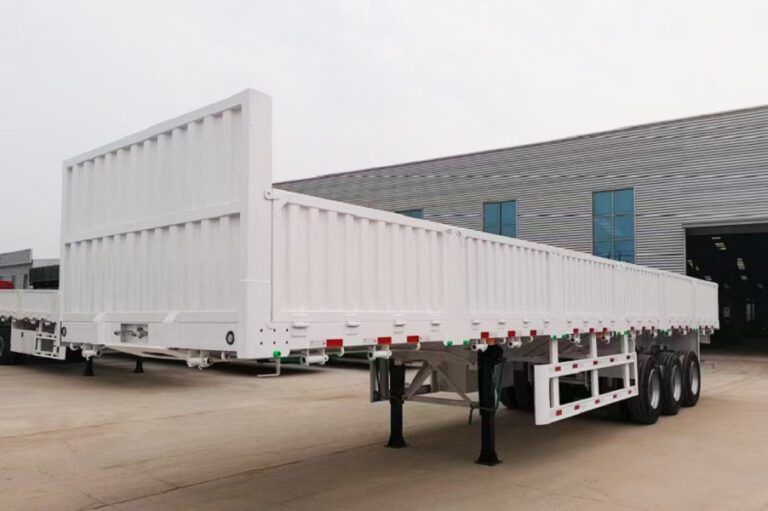Key Words: Semi-Trailer, Features, Applications, Advantages
A semi-trailer is a type of trailer designed to be attached to a truck or tractor unit, forming an essential part of modern freight and logistics. Unlike a full trailer, which has its own front axle, a semi-trailer depends on the truck for support, with a significant portion of its weight resting on the tractor unit.
Key Features of Semi-Trailers
- Design
- Connection Mechanism: Semi-trailers are equipped with a kingpin that connects to the truck’s fifth wheel coupling. This design provides flexibility during turns and ensures easier maneuverability compared to full trailers.
- Axle Placement: The axles are typically located towards the rear, allowing the truck to support the front of the trailer. This shared weight distribution enhances stability and load handling.
- Cargo Capacity
- Semi-trailers are engineered to carry large volumes of cargo, making them indispensable for long-distance freight transport. Their capacity varies depending on the type and size of the trailer but generally allows for efficient bulk transportation.
- Versatility in Types
Semi-trailers come in a variety of configurations, each tailored to specific cargo needs:- Dry Vans: Fully enclosed trailers used for transporting general goods such as clothing, electronics, and non-perishable items.
- Flatbeds: Open-deck trailers ideal for oversized loads like construction materials, machinery, or vehicles.
- Refrigerated Trailers (Reefers): Equipped with temperature control systems to transport perishable goods like food and pharmaceuticals.
- Tankers: Specialized for liquid or gaseous cargo such as fuel, chemicals, or milk.
- Lowboys: Designed for extremely heavy or tall loads, commonly used in construction and industrial sectors.
- Durability and Material
- Semi-trailers are constructed with durable materials like steel or aluminum, ensuring they withstand heavy loads and harsh conditions. Modern designs often incorporate lightweight materials to improve fuel efficiency without compromising strength.
Applications of Semi-Trailers
Semi-trailers are a cornerstone of the logistics and shipping industries, widely used in:
- Freight Transportation: Moving goods across states or countries, often in bulk.
- Construction: Carrying heavy equipment, raw materials, or prefabricated structures.
- Retail and E-commerce: Enabling efficient delivery of goods to distribution centers or end consumers.
- Agriculture: Transporting grains, livestock, or farming equipment.
Advantages of Semi-Trailers
- Cost-Efficiency: High cargo capacity reduces the number of trips needed, optimizing transportation costs.
- Flexibility: Their modular design allows for easy swapping of trailers, enabling quick changes in cargo types.
- Scalability: Tractor units can haul multiple semi-trailers in a single trip (e.g., road trains in Australia).
- Maneuverability: The articulated connection improves navigation in tight spaces compared to rigid trucks.
Semi-Trailers in the Global Economy
Semi-trailers are an integral part of the supply chain, supporting industries ranging from manufacturing to retail. Their ability to adapt to diverse cargo needs makes them a universal solution for freight transport, ensuring goods reach their destination efficiently and reliably.
Semi-trailers are more than just a type of trailer; they are a vital link in the global economy, enabling the smooth transportation of goods over long distances and diverse terrains. Their design, versatility, and reliability continue to make them a preferred choice for logistics and transport companies worldwide.
For more information or to learn about our services, please feel free to contact us. We are here to assist you with all your needs.You can also click here to know more about our products.
- Cement Tanker Trailer1 product
- Drop Side Semi Trailer3 products
- Flatbed Trailer2 products
- Fuel Tanker Trailer1 product
- HOWO Dump Truck1 product
- HOWO Fuel Tank Truck1 product
- HOWO Tractor Head1 product
- Low Bed Trailer2 products
- LPG Tank Trailer1 product
- Skeletal Trailer1 product
- Superlink Trailer2 products
- Tipper Trailer1 product
- Used Pickup Truck4 products

